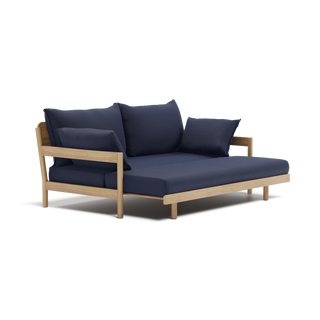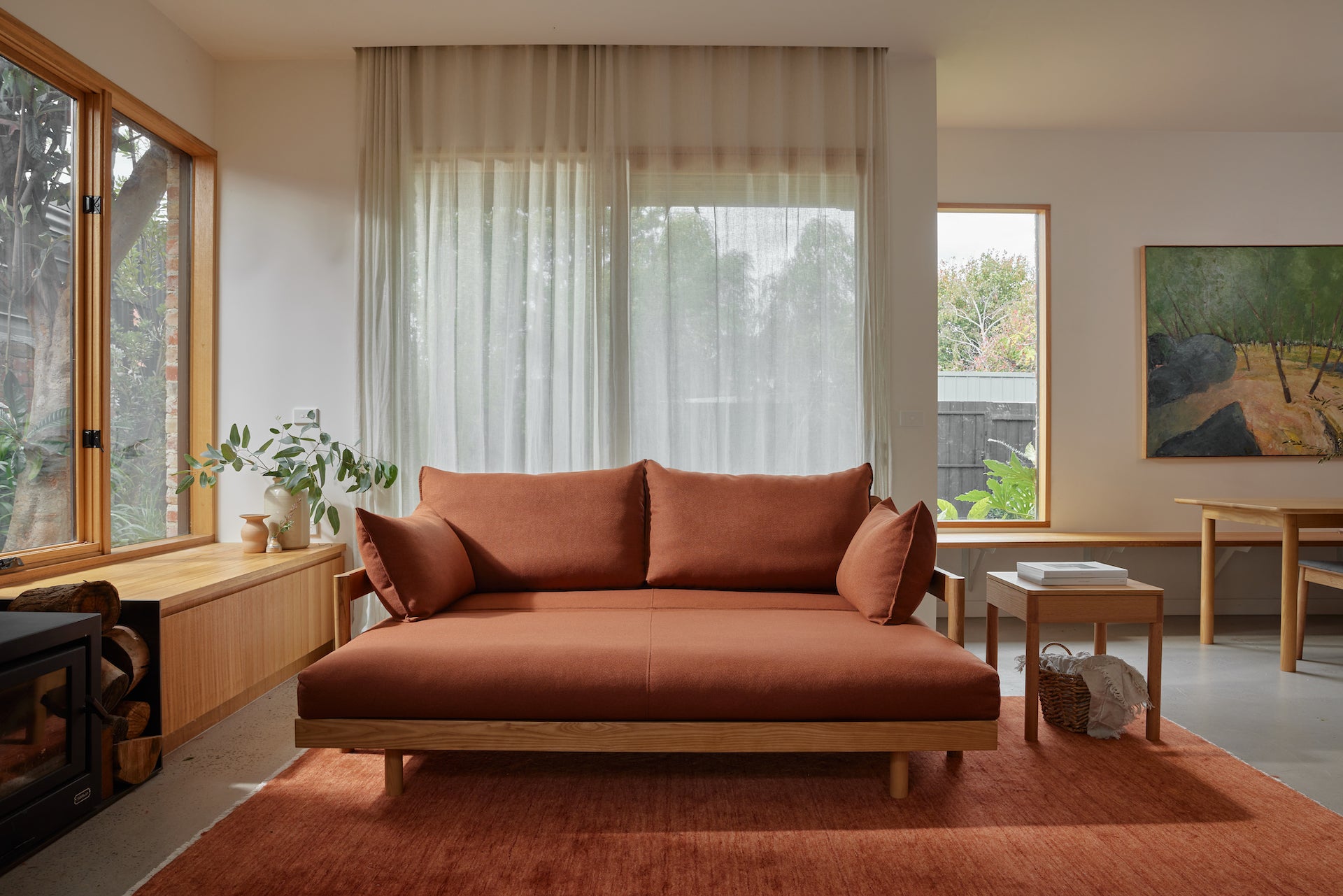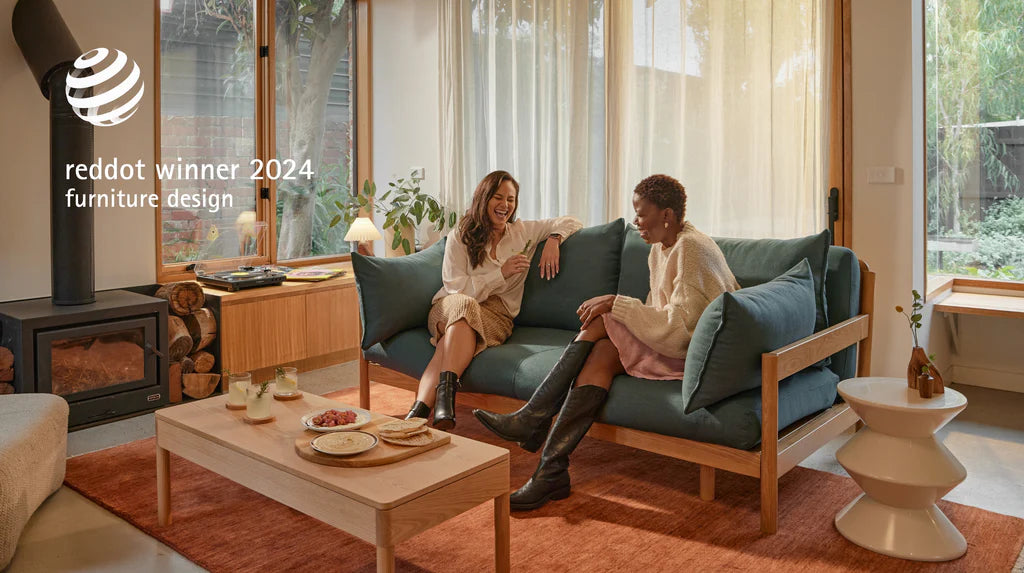“What type of bed frame should I use with my mattress?”
It’s one of the most common questions our customer experience team receives. And fair enough — with so many types of bed bases out there, it can be hard to know what’s best for your space and your sleep.
To make the search easier, we’ve broken down the main types of bed frames and what to look out for, so you can choose the best base for your needs — and rest easy.
Why do I need a bed frame?
A good bed frame does more than elevate your mattress — it elevates your entire sleep experience. Here’s how:
It extends the life of your mattress
A slatted bed frame helps keep your mattress well ventilated, reducing the risk of moisture build-up, mould, or mildew — especially important in New Zealand’s cooler, damper climates.
If you’re placing your mattress on the floor while you wait for a frame to arrive, be sure to dry the surface thoroughly and open your windows to encourage airflow.
It gives you extra storage
Live in a smaller space or keen to maximise room? Bed frames that sit off the floor offer a smart storage opportunity. Some designs have enough clearance to fit suitcases or boxes underneath, while others include built-in drawers to neatly store your linen, clothing, or extras.
Just keep in mind: not all elevated frames offer clear storage. Some have a central beam or structural support that makes storing underneath difficult, so be sure to check before buying.
It’s better for your health
Sleeping close to the ground can mean breathing in more dust and allergens. If you love the minimalist look of a lower bed, consider a platform or floating-style frame that gives you the aesthetic without compromising on elevation or hygiene.
If finances are coming between you and the bed frame of your dreams, many retailers offer interest-free finance options, so you can sleep now and pay later.
It makes your space feel complete
Let’s not overlook style. A well-designed frame, like the Eva Timber Bed Frame, brings warmth, structure, and harmony to your bedroom. Made from sustainably sourced timber and winner of the Good Design Award, it’s a frame that feels just as good as it looks.
What to consider when buying a bed frame
Size and height
Before clicking “add to cart,” double-check the frame’s internal dimensions. Many imported bed frames aren’t made to New Zealand standard sizing, which can leave your mattress slipping or unsupported.
Also consider how high the bed will sit once your mattress is added. If you have young kids, mobility issues, or simply prefer a certain height, factor this into your decision.
Ease of assembly
Nobody wants to spend their weekend wrestling with an allen key. Look for a bed frame that’s easy to assemble, preferably with zero tools required.
The Eva Timber Bed Frame clicks together with just four steps — no screws, no stress. It also disassembles just as easily, making moving house (or rooms) that little bit simpler.
Delivery and returns
Wherever you are in Aotearoa, we offer fast shipping on our bed frames. Even better? All Eva products come with free returns within 14 days. If it’s not right for you, send it back — no hard feelings. Just check the fine print for any return conditions.
Squeak-free construction
A creaky bed is nobody’s idea of a good night. Look for a frame designed to stay silent through every toss and turn. The Eva Timber Bed Frame is engineered to be completely squeak-free — bliss.
If you’re placing your bed on timber or hard flooring, pop a protective pad under each leg to prevent slipping or floor damage. These are easy to find at your local hardware stores.
Sustainability and health certifications
We spend around a third of our lives in bed, so make sure your bed frame is made with safe, non-toxic materials. The Eva Timber Bed Frame is constructed with FSC® certified timber and water-based glue and contains no nasty chemicals. Good for your sleep, and good for the planet.
Aesthetic
If you want your bed frame to be a worthwhile investment that stays with you for many years, you’ll most likely want to opt for a timeless, minimalist design that won’t ever go out of style.
High-quality timber works great for longevity, as it won’t suffer as much wear and tear as a fabric-covered base. Bed frames with built-in cable management (like the Eva Timber Bed Frame) will keep cords and charging cables out of sight and mind, so you can stay zen.
Types of bed frames
Slatted bed frames
Slatted frames allow excellent airflow, help regulate body temperature, and are often lighter and easier to move than solid bases. Just make sure the slats are no more than 8cm apart to provide proper support.
Flexi slats
Also known as sprung slats, these curved slats offer a bit of “give” and can feel more responsive to movement. However, they often offer less consistent support and can lead to mattress sagging over time, especially with spring mattresses.
Flat slats
Flat slats are straight and rigid, offering stable, consistent support for all mattress types. They’re the best choice if you’re after longevity and a solid sleep foundation.
Pros:
- Promote airflow
- Lightweight and often easier to move
- Usually more affordable
- Great storage potential underneath
Cons:
- Flexi slats can reduce mattress life
- Require some assembly
Box spring frames
These fabric-covered bases are more common overseas but less so in New Zealand. Box spring bed frames are fabric-covered frames that include a layer of springs. These internal springs are designed to add a level of ‘bounce’ — but they’re not for everyone and won’t go well with many mattresses.
Pros:
- Some like the added movement
- Can have a plush, upholstered look
Cons:
- Often bulky and heavy
- Poor airflow
- Not suitable for many modern mattresses
- Usually no storage underneath
- Can be expensiveHigh partner disturbance
Adjustable frames
Adjustable bed frames are electronically controlled, allowing you to elevate or recline with a remote. These are ideal for people with medical needs or mobility issues. However, they’re pricey and often incompatible with many types of mattresses.
Pros:
- Helpful for elderly people or people with specific health needs
Cons:
- Expensive and heavy
- Limited mattress compatibility
- Minimal to no storage
What’s the best bed frame for back pain?
While there’s no one-size-fits-all solution, a bed frame with flat, supportive slats is often the best choice that will provide the most support. A high-quality mattress paired with a flat or solid base ensures you get the support you need without sacrificing breathability or durability.
So, what’s the best bed frame?
In the end, it comes down to finding something that suits your mattress, space, and lifestyle. As a general rule, a flat slatted frame like the Eva Timber Bed Frame ticks all the right boxes — supportive, breathable, stylish, and easy to assemble.
Just remember to check for:
- Compatible sizing
- Easy, tool-free assembly
- A strong returns policy
- Squeak-free construction and durability
- Health and sustainability credentials
If your frame meets all that criteria, you’re well on your way to better, more thoughtful sleep.


